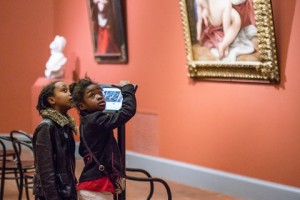The Digital Future: How Museums Measure Up

A 2013 exhibition at the Worcester Art Museum in Massachusetts provided visitors information on iPads. Credit Erb Photography
The digital future continues to unfold at American art museums. The best recent innovations have been gathered in a new report, “Next Practices in Digital and Technology,” that the Association of Art Museum Directors is set to release on Friday.
The report describes 41 museum projects that use digital technology to engage visitors, make collections more accessible and understandable or improve museum operations like ticketing and collections management.
The projects cover a wide range. The Nasher Sculpture Center in Dallas is compiling a digital census of French sculpture in the United States that will be available as an internet portal. Working with 280 museums, the center has compiled records of 7,000 works made between 1500 and 1960 that can be found in public collections, museums, historic homes, and public spaces. The center estimates that it will add another 8,000 to 13,000 works before the project is completed in 2019.
The Worcester Art Museum in Massachusetts has replaced the traditional wall labels in its renovated Baroque galleries with iPads that present not only traditional curatorial information but also alternative labels written by area college students, religious leaders and educators, with an invitation for visitors to write their own labels.
More whimsically, the Peabody Essex Museum in Salem, Mass., designed an interactive web app for its 2014 exhibition “Turner and the Sea.” Called “Turner’s Apothecary Mood-o-Meter,” the app quizzes visitors to gauge their mood, using concepts out of a 19th-century apothecary, and then “prescribes” a specific Turner painting to look at.
By William Grimes
Source: www.nytimes.com